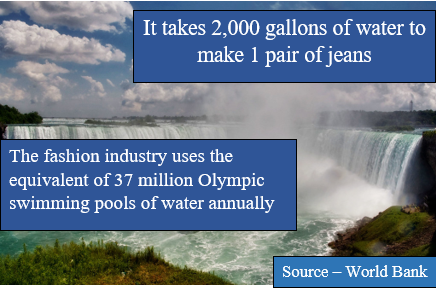Environmental Waste
November 16, 2021
Barrages of trends create piles of clothing for poor little sea otters. Just imagine their little hands reaching for a clam to split only to find a discarded tube top in their grasp. Sad. But nothing is sadder than the non-dramatized effects of clothing overconsumption. Fast fashion retailers are active in creating a pollution riddled future. Some industries, such as oil and gas, are easy to spot when it comes to creating problems for our climate. But little do most of us know the harrowing effects the fashion industry has on our Earth. Though Shein’s website states that they are committed to zero waste fashion and accept donations at the rare “pop-up” shein events, the real killer isn’t the overconsumption, the true murderer is the fabric makeup of fast fashion clothing.
Clothing brands such as Shein, and even brick and mortar stores such as Ragstock, speak to a fabric composition of 95% polyester. Polyester, like other synthetic fabrics, is composed of plastic. This means that your Shein crop top will pull into smaller and smaller scraps until it creates microplastics which strangle our little fishy friends. As these microplastics become more concentrated in our Earth’s waters, they are more and more likely to make their way up the food chain and into our stomachs, with lasting implications for our species. In order to prevent the accumulation of microplastics, invest in clothing that is good for both style and our futures. Look for clothing with less elastic fabrics or invest in the community at your local thrift stores. Some environmentally friendly fabrics that won’t break the bank include cotton, wool, linen, and tencel(from wood pulp).
